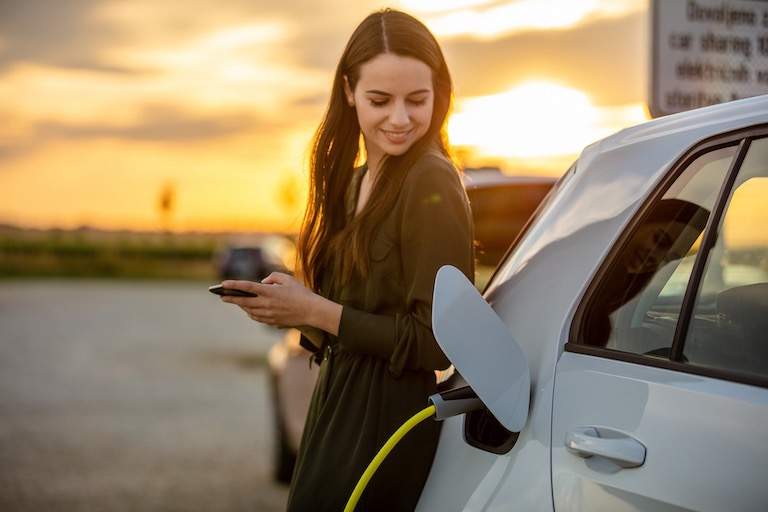
Plug-in hybrid electric vehicles coming in 2018
PHEVs 'plug' the gap between hybrid and fully-electric, but which ones will make it to Australia this year?We have recently looked at which new all-electric vehicles (EVs) will be released in Australia in 2018, and this week we're covering plug-in hybrid vehicles (PHEVs).
One step beyond hybrid vehicles without plug-in capability, such as Toyota's Prius, PHEVs combine an internal-combustion engine with the possibility of short-range pure-electric motoring.
The best-of-both-worlds solution (between a petrol/electric hybrid and a fully battery-powered EV) allows the vehicle to be plugged in to a domestic power outlet to charge its battery for electric-only operation with zero tailpipe emissions.
Typically, in concert with on-board power regeneration such as in a regular hybrid, this provides for a real-world driving range of up to 50km - far more than a non-plug-in hybrid, which may offer only a few kilometres of battery range.

Like hybrids, however, and unlike EVs (or range-extender EVs, which incorporate a combustion engine that acts as a power generator, extending their range), PHEVs are powered primarily by a conventional combustion engine - fuelled by petrol in all cases in Australia so far.
PHEVs currently available here include the BMW 330e, 530e and X5 40e, the Mercedes-Benz C 350e, E 350e and GLE 500e, Mitsubishi Outlander PHEV, Porsche Cayenne and Panamera E-Hybrid and Volvo's T8 XC60 and XC90.
While none of those models are cheap or popular, they do offer a stop-gap solution better suited to the distances Australian buyers often encounter; and are a better option than pure EVs, for which little public charging infrastructure yet exists.
In 2018, a number of new PHEVs will join the local market. Here we look at five such examples.
Audi Q7 e-tron

The seven-seat Audi Q7 e-tron promises an astonishing combined fuel range (1400km), silent inner-city running and seamless diesel-electric operation.
While it will be expensive and rather heavy, the Q7 e-tron is a machine of many talents, combining a 3.0-litre turbo-diesel V6 with a permanently excited synchronous electric motor to deliver a system output of 275kW/700Nm - and a 0-100km/h time of 6.0sec.
Audi claims a combined cycle figure of 1.7L/100km and an all-electric range of 56km. It's expected the Q7 e-tron will be priced from $145,000 (plus on-road costs).
BMW i3 and i8

BMW's upgraded i3 range is led by the all-electric i3 (125kW/250Nm electric motor, 94Ah battery, $68,400 starting price) and the sportier i3s (135kW/270Nm, $69,900).
Both models offer a claimed electric driving range of 200km and, while the standard i3 claims a 150km/h top speed and 7.3-second 0-100km/h time, the i3s is said to hit 100km/h in 6.9sec and a 160km/h top speed.
Priced about $6000 higher will be range-extender versions of both models (dubbed 'REX', but we'll call them PHEVs here), fitted with small two-cylinder 28kW petrol engine/generator that BMW says increases everyday range by a further 130km.
The 2018 i3 REX will cost $74,700 (up $300), with the new i3s REX pegged at $75,900.

Meantime, by mid-year BMW will also release a drop-top version of its plug-in petrol-electric supercar with comparable range and performance to its five-year-old coupe counterpart.
Boasting updates it will share with the updated i8 Coupe, the BMW i8 Roadster will offer up to 55km of all-electric range and a 0-100km/h time of 4.6sec (0.2sec slower than the Coupe).
The i8 Roadster combines an electric motor with a 1.5-litre three-cylinder turbo-petrol mill to make a combined total of 170kW/320Nm. Pricing will likely exceed the $303,300 list price of the current i8 Coupe.
Hyundai IONIQ

Now for something at the more realistic end of the price scale: Hyundai's IONIQ range of futuristic small hatches.
Landing in April, the IONIQ (pronounced 'ionic') will be offered in hybrid, battery-electric and plug-in hybrid electric formats, with an anticipated starting price of around $35,000.
Aimed directly at Toyota's Prius, the Hyundai IONIQ PHEV combines a petrol engine with an electric motor and battery pack (with plug-in capability), and drives the front wheels via a dual-clutch transmission.
Hyundai says the PHEV variant will offer up to 50km electric range, with total system output of 104kW/265Nm. A combined fuel consumption number of 3.4L/100km is claimed.
Range Rover Sport P400e

The first plug-in hybrid versions of the full-size Range Rover and its smaller Sport sibling are expected to arrive in local showrooms later this year.
Boasting a 2.8L/100km combined-cycle figure and a 51km all-electric range, the Range Rover introduces JLR's Si4 PHEV powertrain to market by combining a 2.0-litre four-cylinder turbo-petrol engine and electric motor for total system output of 297kW/640Nm.
The Range Rover Sport P400e will replace the hybrid Sport in Range Rover's line-up, and is expected to have a similar asking price of approximately $187,900. Range Rover claims a 0-100km/h time of 6.8sec for the 2509kg SUV, and a top speed of 220km/h.
Volkswagen Golf GTE

Volkswagen may release a plug-in hybrid version of its volume-selling small hatch, dubbed the Golf GTE.
Claimed to combine the performance of VW's sporty Golf GTI with motorcycle-like efficiency, the Golf GTE is mechanically-identical to Audi's short-lived Audi A3 Sportback e-tron.
Its 1.4-litre four-cylinder turbo-petrol and electric motor combination makes 150kW/350Nm and the GTE boasts a 7.6sec 0-100km/h dash and a 222km/h top speed.
The Golf GTE offers 50km of all-electric range and 939km of total driving range with a combined fuel consumption figure of 1.5L/100km. If it comes here, the Golf GTE will be priced at close to $50,000.


Please see our Editorial Guidelines & Code of Ethics (including for more information about sponsored content and paid events). The information published on this website is of a general nature only and doesn’t consider your particular circumstances or needs.
























